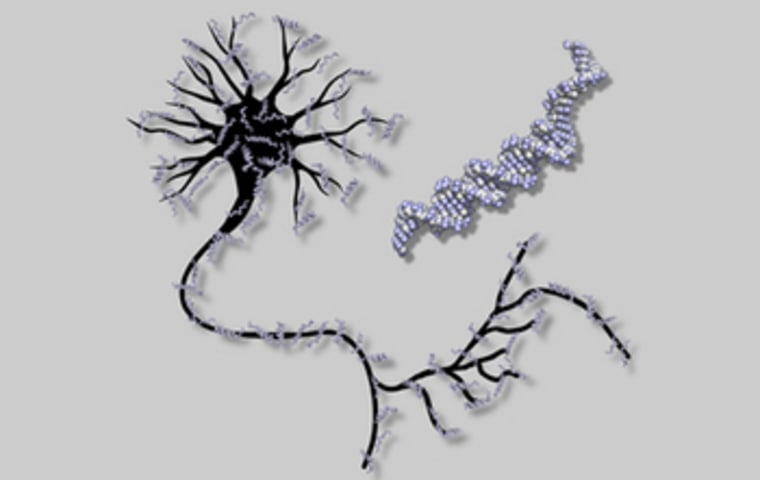Artificial intelligence is no longer the domain of clunky, mechanical robots and computers. It thrives inside a test tube where scientists have created an artificial neural network made out of DNA – essentially the beginnings of a brain – that was able to ace "plop" quizzes.
The network is a circuit of interacting molecules that can recall memories based on incomplete patterns. It consists of four artificial neurons made from 112 distinct DNA strands and plays a mind-reading game in which it tries to identify a mystery scientist.
The team, led by bioengineer Lulu Qian at the California Institute of Technology, chose to build its network out of DNA molecules because, before brains evolved, molecular interactions inside single-cell organisms showed limited forms of intelligence such as searching for food and avoiding toxins.
"Molecules can act as biochemical circuits that process information and perform computational tasks," Qian explains in a video describing her team's work published in the July 21 issue of Nature.
Because scientists can synthesize DNA strands with whatever base sequence they want, the researchers were able to program the molecules to function like a simple model neuron that fires only when it passes a certain threshold. Linked together, they behave like a network of neurons.
To play the plop quiz game, the neural network was trained to "know" four scientists, whose identities are each represented by a specific, unique set of answers to four yes or no questions, such as whether the scientist was British.
After thinking of a scientist, a human player provides an incomplete subset of answers that partially identifies the scientist. The player then conveys those clues to the network by plopping DNA strands that correspond to those answers into the test tube.
These plopped-in strands interact with the neural network, which fires or not depending on its answer. To see the neurons firing, a fluorescent molecular marker lit up when activated.
In this way, the network communicates via fluorescent signals to identify which scientist the player has in mind or that it has insufficient or contradictory information. The researchers played the game with the network using 27 different ways of answering the questions. It responded correctly each time.
Beyond playing lab games, the technology has applications for the design of new drugs as well as performing chemical and biological research, the scientists say. For example, biochemical networks designed to go inside a body could help identify a disease and deliver targeted drugs.
But that future is distant, Qian says. For one, finding a way to get the network to function inside a living organism presents a whole new set of challenges than operating inside the test tube.
As for creating an artificial human brain with lab-made DNA? Don't worry just yet. The four neuron network took eight hours to identify each mystery scientist. The human brain consists of 100 billion neurons and can make decisions in a split second.
(Via Discovery News)
More on artificial intelligence:
- Beyond 'Jeopardy': Watson wins
- What will happen when machines outthink us?
- Scientists work on artificial cat brain
- Neuron-like computer hardware finally gets software

is a contributing writer for msnbc.com.
